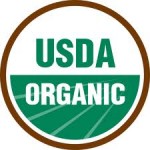Pet food labels can be just as confusing as human food labels, don’t you think? Last week my mom and I were

This is Thinking Gracey. When you see this image, you might want a "thinking beverage" and/or a nap before, during or after reading.
invited to Hill’s Pet Nutrition to learn about Hill’s Pet Food Brands including Hill’s Science Diet® and Hill’s Prescription Diet® formulas. We also learned about some exciting new products that we will talk about in a future post. But before we talk about the pet food formulas, I thought we could take a moment to talk about the pet food label, and what we need to know about the information that is printed on the label. Here are some answers to questions you have asked.
Who decides the nutritional standards for pet foods in the United States?
AAFCO stands for Association of American Feed Control Officials. This is the organization that determines the nutritional standards for pet foods sold in the United States. These same standards are recognized in Canada.
What methods are used to determine nutritional adequacy?
Based on nutritional levels and procedures defined by AAFCO, the nutritional adequacy of pet foods is generally determined by 1 of 2 methods:
Formulation method
- This method is less expensive, results are determined more quickly because actual feeding or digestibility trials are not required.
- There is no guarantee of pet acceptance or nutrient bioavailability when utilizing this method.
- The pet food product must meet the nutrient requirements for the specific life stage established by an AAFCO recognized nutrient profile. This is accomplished by a laboratory analysis.
What you see on a label meeting the formulation method : Brand X Cat Formula is formulated to meet the nutritional levels established by the Association of American Feed Control Officials Cat Food Nutrient Profiles for Maintenance.
Feeding trial method
- This method is known as the “gold standard” for determining nutritional adequacy. The manufacturer must perform an AAFCO protocol feeding trial using the food being tested as the sole source of nutrition.
- Feeding trials are the best way to document how a pet will perform when fed a specific food.
What you see on a label meeting the Feeding trial method: Animal feeding tests using AAFCO procedures substantiate that Brand Y Adult cat food provides complete and balanced nutrition for maintenance of adult cats.
What information must all pet foods must include on their label?
- Product name
- Brand name
- Species name or specialty pet for which the food is intended
- Quantity statement with Net weight
- Guaranteed analysis
- Ingredient statement
- Nutritional adequacy or purpose statement –* (more on this below)
- Feeding directions
- Name and address of manufacturer or distributor
You might be wondering what is a nutritional adequacy statement? Here is an explanation.
*Nutritional Adequacy Statement
Foods can be formulated or tested to meet one of three life stages:
- growth and reproduction
- maintenance
- all life stages
Foods that are formulated for all life stages must ensure they meet the most nutritionally demanding life stage which is growth and reproduction. Therefore “all life stage” diets are designed for kittens or pregnant cats.
What are the AAFCO requirements for naming pet foods?
AAFCO has defined 3 product forms for pet foods based on moisture level of the food.
Moisture level product form
- <20% Dry
- >20% and <65% Semi-moist
- >65% Wet
The maximum moisture declared on a wet pet food shall not exceed 78%. If the moisture level is above 78%, the product must be labeled as a stew, gravy, sauce, broth, aspic, juice, or milk replacer.
IF THE PET FOOD NAME SAYS:
Chicken, beef, seafood, etc. (ingredient without modifiers) This food must contain at least 95% of the named ingredient.
Dinner, entree, platter, etc. (chicken diner, beef entree, seafood and beef platter) This food must contain at least 25% of the named ingredient.
With (with chicken, with beef, with seafood, etc) This food must contain at least 3% of the named ingredient.
Flavor (chicken flavor, beef flavor) No specific % but ingredient list must disclose source of flavor.
What about the terms Organic, Natural, Holistic and Human Grade?
Organic is legally defined. According to the United States Department of Agriculture (USDA), the term organic may only be applied to pet foods that follow USDA rules. You will see the USDA Organic seal.
Natural is legally defined. According to AAFCO the term “natural” requires a pet food to consist of only natural ingredients without chemical alterations.
Holistic is not legally defined. There is no legal definition of this term under the laws devoted to pet foods. Any manufacturer can make claims of “holistic” in literature and brochures regardless of ingredients chosen.
Human Grade is not legally defined. Claims that a product contains or is made from ingredients that are “human grade”, “human quality”, “people foods”, “ingredients you ( the purchaser ) would eat”, are false and misleading.
Understanding the Label
Guaranteed Analysis
This analysis gives a minimum for crude protein and crude fat and a maximum for crude fiber and moisture. It does not give the actual amounts of the nutrient. Looking at the targeted nutrient amount from the manufacturer’s product literature is a better way to evaluate the nutrient content of the food.
Required on the pet food bag:
- Protein >Minimum
- Fat>Minimum
- Fiber> Maximum
- Moisture> Maximum
The Ingredient Statement
Ingredients are listed in descending order by their predominance by weight in non-quantitative terms according to the product’s recipe prior to manufacturing. The nutrient value of ingredients cannot be identified from the ingredient statement. Ingredients must be named according to AAFCO definitions.
I hope that you have a better understanding of pet food labels. I am working on an upcoming post about an innovative way to make better, more effective pet foods that we learned about on our visit to Hill’s Pet Nutrition Center called Nutrigenomics. I think you will find it interesting too.
We are wondering what cat food do you have in your habitat? Do you see anything printed on the label that you would like to learn more about?
Wow! Such great information!!! We’ve used Iams for years, but I just recently switched the girls to a more natural food. Abigail is a little over weight and the vet suggested canned food. I wanted to get the best I can afford so I did some research and now the girls get 1/4 can of natural balance wet food every evening. Their dry food is a mix of Iams premium protection adult food and a natural cat food (the name is escaping me right now). As long as they continue to be happy and healthy we will stick with this plan, though I might alter the dry food after they finish this bag.
Thank you for the post. As we all know there are two sides to everything. I was Hill’s cheerleader for many years. I fed my dog Hill’s for almost 13 years because I believed my Vet would only carry the ‘best’ foods for my dog. When my dog was approximately 11, and showing signs of old age, I started researching alternative foods and supplements based on recommendations from friends who I respected who had been studying alternatives for years. At age 13 I switched my dog off HIll’s (you can put any high end food (Royal Canine, Iams, etc.) and started feeding her a Raw diet and put her on holistic supplements that addressed underlying health challenges. In a short period of time I had a new dog. More energy, healthier coat, sparkling eyes, no more groaning when she layed down and got up, running at times like she was a pup and on and on. It takes work though. The basic ingredient in the high end pet foods (don’t EVEN get me started on grocery store food) is grain, then we get to the chicken ‘parts’ and other ingredients – uggggh. Dogs are carnivores so feeding them grain based foods does not give them the natural nutrients they need. Additionally two of my Vets told me that companies like Hill’s (although well advertised) support the Veterinary schools and those are the products that are given free and the ones they go to. Vets have little to no schooling on other diets or homeopathic, holistic or natural supplements. Do your homework – it’s hard work to study this stuff but I can promise you that your pet will benefit if you choose to make the commitment both financially and emotionally.
Regarding human grade, the term is generally used as the food being processed in a human grade facility. However if you go to small independently owned natural or holistic pet food stores that carry anything and everything that PetCo and PetSmart and grocery stores DO NOT carry, you will find that there actually are treats and snacks that you the Pawrent can eat if you wanted to! BOL!
BTW, Reba celebrated her 16th birthday on 10/15/11. You can catch her at http://MUTTeringsAndThings.blogspot.com
Oh my, I see now why you needed your glasses! You have really been studying! Thank you so much, for your hard work and helpful information! xoxox
You are welcome Janet. Labels can be confusing, can’t they?
This is such a helpful post. I wish you were my teacher when I was in school learning about topics like this! You took a complicated topic and really made it easy to understand. Thank you. I am going to bookmark this post.
Thank you for reading Michele. Earl is also a super fantastic teacher. You can ask him anything.